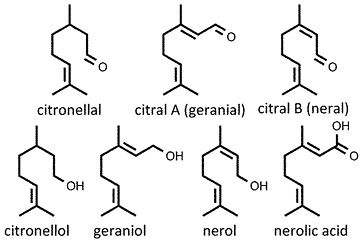 Melissa officinalis
Melissa officinalis
lemon balm • balm • sweet balm
Back to “Salad herbs and herb mixtures: lemon balm (Melissa officinalis)”
Back to “Culinary herbs: balm (Melissa officinalis)*; lemon balm (Melissa officinalis)*; sweet balm (Melissa officinalis)*”
Melissa officinalis L. (Lamiaceae); sitroenkruid (Afrikaans); citronnelle, mélisse (French); Zitronenmelisse (German); melissa, cedronella (Italian); melissa (Spanish)
DESCRIPTION The fresh or dried leaves have a wrinkled appearance, with prominent veins, toothed margins and a characteristic lemon-like smell.
THE PLANT A perennial herb of 0.6 m (2 ft) high, bearing opposite leaves and small, two-lipped, white flowers. The plant is also known as balm or balm mint but should not be confused with bee balm (Monarda didyma), a popular and attractive North American garden plant that was once used in traditional medicine (“Oswego tea”)1 and to flavour venison.2
ORIGIN Lemon balm occurs naturally in the eastern Mediterranean region and Asia Minor. The herb is recorded in classical Greek and Roman literature. In recent times it has become a popular medicinal and culinary herb and is cultivated on a commercial scale in most parts of Europe. It has become invasive in the United States.
CULTIVATION Lemon balm is a popular garden herb in most temperate parts of the world. Propagation is very easy, from seeds, cuttings or by division of mature plants. Plants will survive even severe frost and do best in full sun or partial shade in moist, fertile and well-drained soil. Lemon balm tends to spread rapidly, so that occasional pruning may be beneficial. Cultivars differ in the colour of the leaves (‘Aurea’, ‘Variegata’), in the composition of essential oil (‘Lemonella’, ‘Lime’) and in growth habit (‘Quedlinburger’, ‘Quedlinburger Niederliegende’).
HARVESTING Fresh leaves are picked for culinary use as required. They can also be successfully dried for later use.
CULINARY USES The aromatic leaves with their distinctive lemon aroma are used as ingredient of green salads, fruit salads, desserts, ice cream, milk puddings, soups, stuffings and sauces (e.g. lemon balm pesto). The flavour goes well with a wide range of dishes, including eggs, omelettes, vegetables, stews, chicken, pork and fish. Lemon balm, often in combination with other herbs such as peppermint and spearmint, adds flavour and colour to herbal teas (both hot and iced), tisanes, fruit drinks, punches, claret cups, homemade lemon liqueurs and cocktails. The sweet-scented flowers are distilled to make Eau de carmes3 and various other lemon drinks and liqueurs such as Benedictine and chartreuse.
FLAVOUR COMPOUNDS The lemon flavour is due to the presence of citronellal and citral (a mixture of citral A and B, alternatively known as geranial and neral, respectively). Smaller amounts of citronellol, geraniol and nerol are also present in the essential oil.3

NOTES The name Melissa is the Greek word for “bee” and the plant has the reputation, since ancient times, that it attracts honeybees.4 The pheromone of honeybees (synthesized in the Nasonov gland of the bee) includes geraniol as major compound, together with smaller quantities of citral and nerolic acid.4 The combination of these compounds is included in artificial bee attractants.
1. Mabberley, D.J. 2008. Mabberley’s plant-book (3rd ed.). Cambridge University Press, Cambridge.
2. Tilford, G.L. 1997. Edible and medicinal plants of the west. Mountain Press, Missoula.
3. Larousse. 1999. The concise Larousse gastronomique. Hamlyn, London.
4. Harborne, J.B., Baxter, H. 2001. Chemical dictionary of economic plants. Wiley, New York.
5. Burgett, M. 1980. The use of lemon balm (Melissa officinalis) for attracting honeybee swarms. Bee World 61: 44–46.